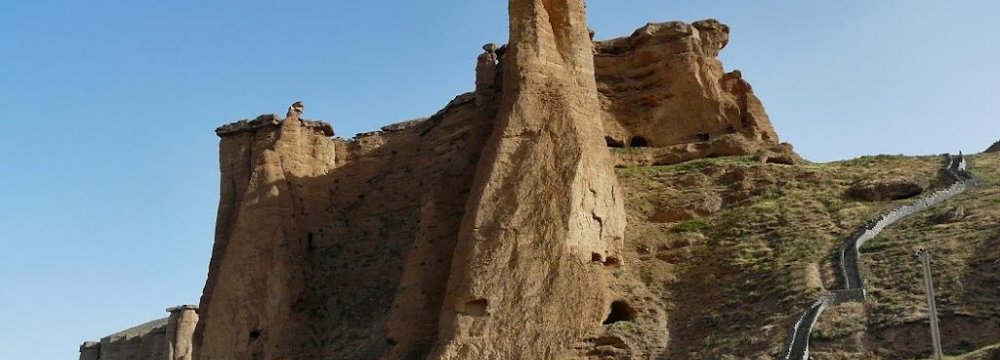Simply put, the fort is unusual! At first glance, Behestan fort is a group of impressive hoodoos (natural columns of rock), standing atop a mountain in Mahneshan county, Zanjan Province.
The fort, which resembles a huge termite mound, is carved within the mountain. Chambers, corridors, and stairways are what visitors see once inside. The design shows a great degree of spontaneity. Rooms all differ in size; some have other rooms or annexes within.
Stairways are about a meter wide. With the steps washed away or rounded, the ascent can be rather difficult, demanding, and at times a mountaineering feat.
The location of the fort is strategic. The building seems to have served as the ruling seat of the area, especially its upper levels. The lower levels housed granaries and other food storages, as stated in zanjan.irib.ir.
Standing at the heart of a mountain made of heavily compacted soil consisting of conglomerate rocks, the Achaemenid structure has however been exposed to erosion due to strong winds and the nearby river Qezel-Ozan, which happens to be the fullest river of Zanjan.
Winds, rains, and whatever else coming from above, carved and washed away the face of the fortress, leaving deformed curvatures like those in the works by the Catalan architect Antoni Gaudi.
The robust fort continued to house people well into a few centuries after the advent of Islam.





